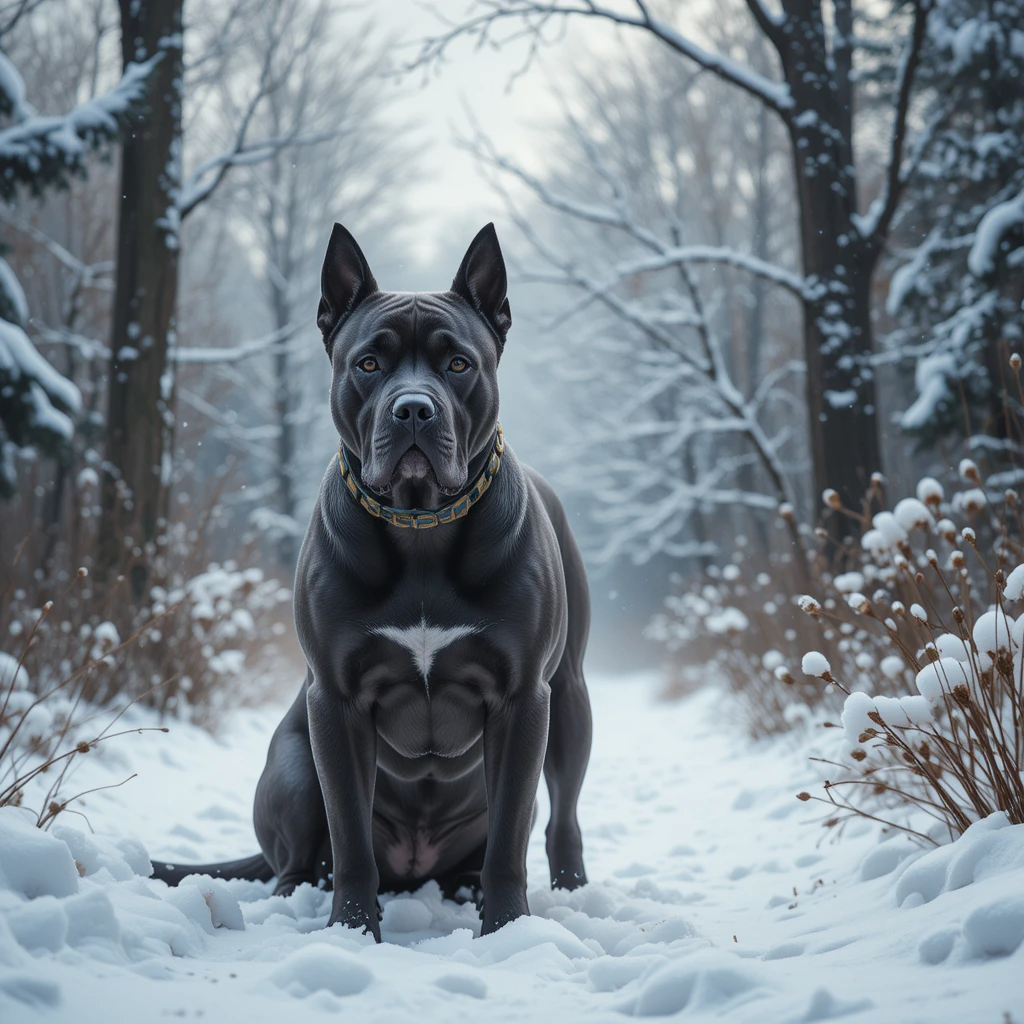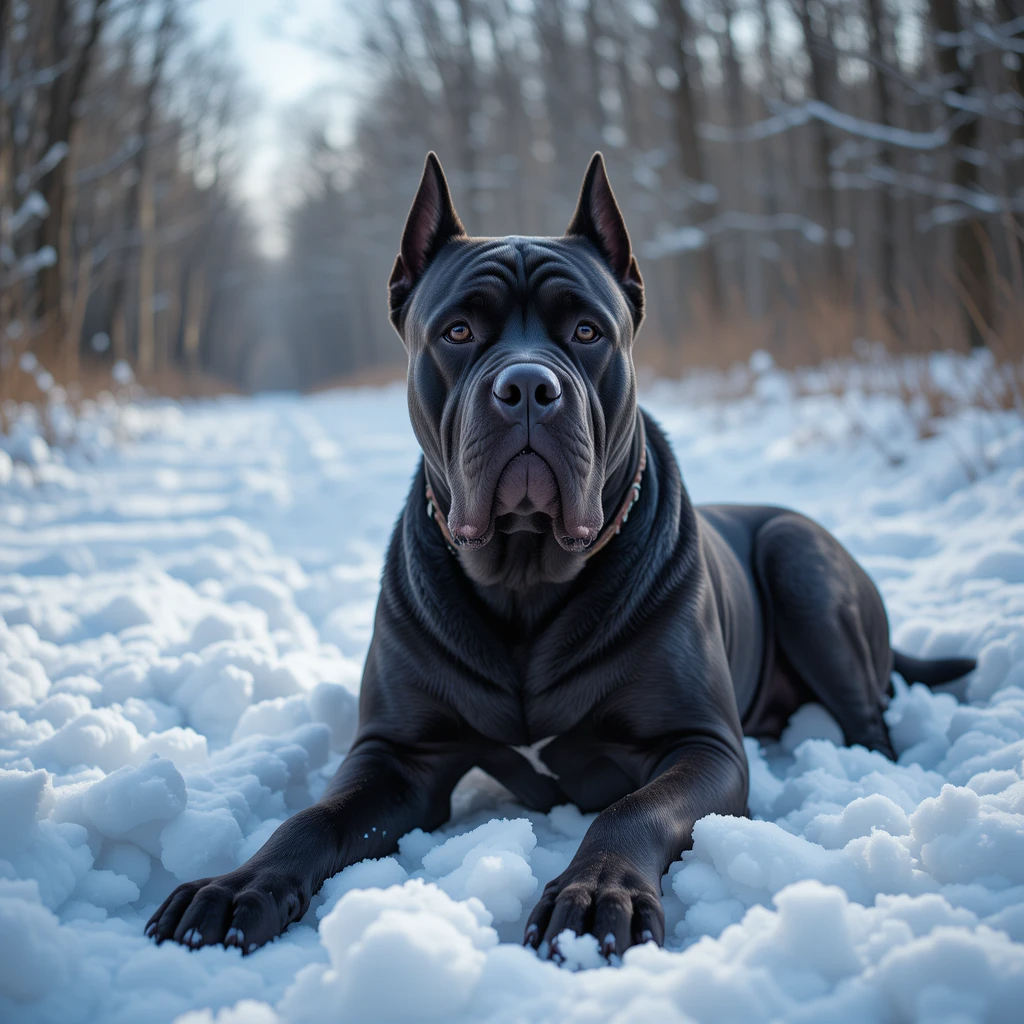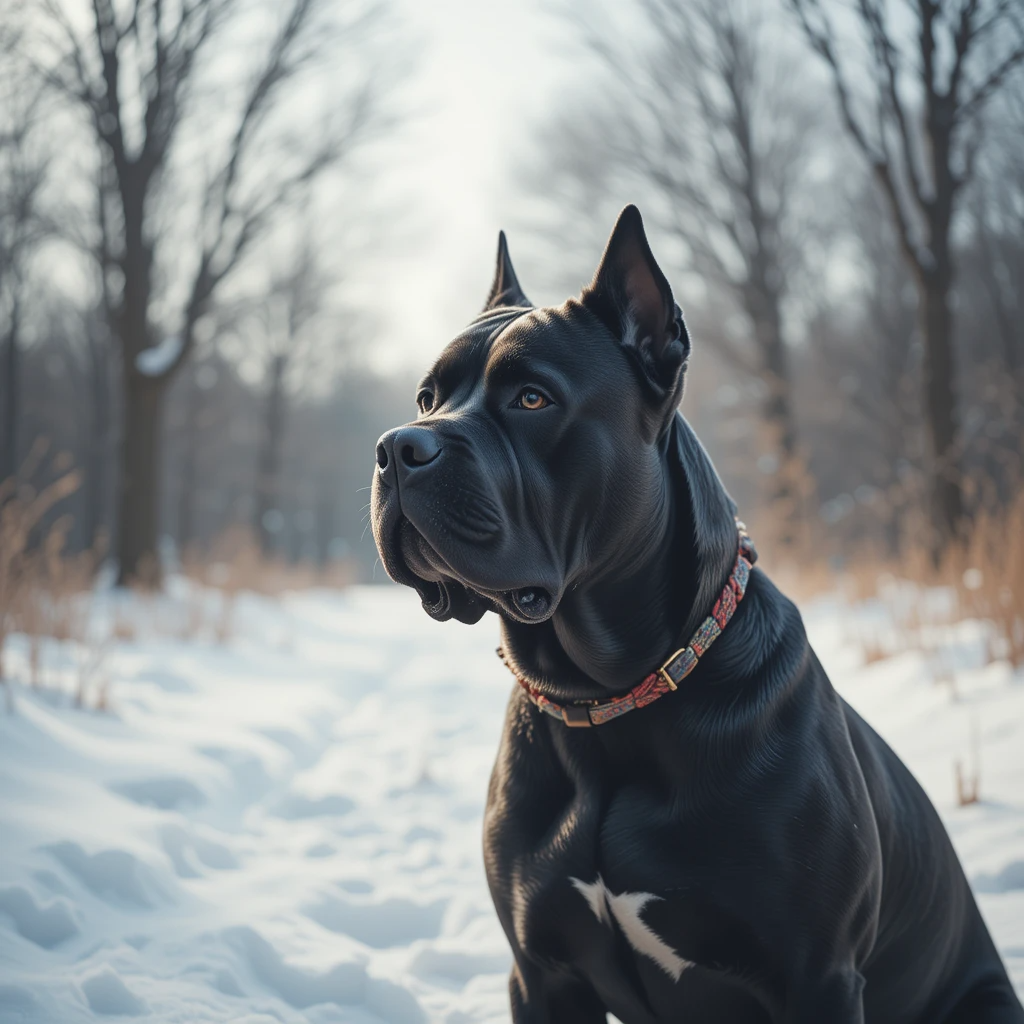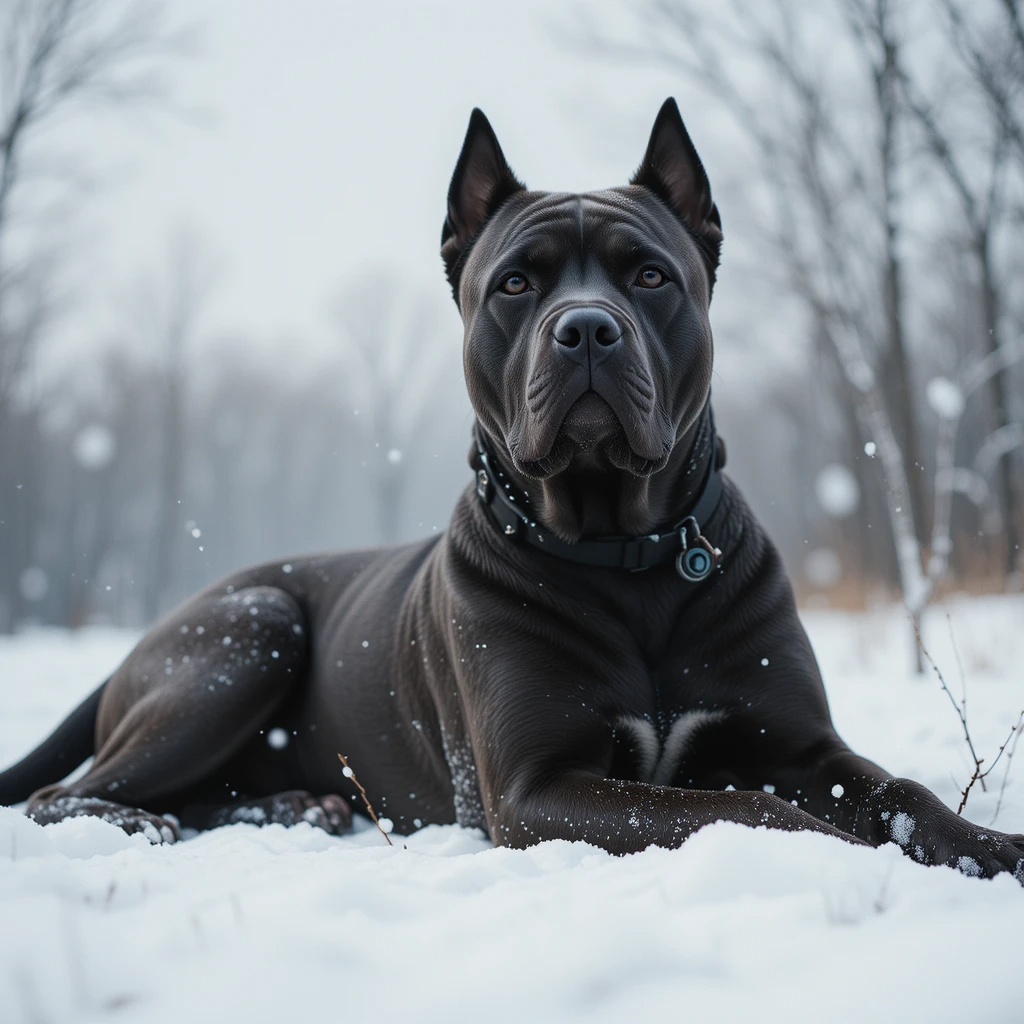Winter is a time for cozy moments by the fire, but it also Winter with Cane Corso brings a host of challenges for our pets. If you’re a proud Cane Corso owner, you already know how strong, loyal, and protective these dogs are. But despite their robust build, even a Cane Corso needs extra care when the temperatures dip. These majestic dogs are naturally built to handle cold, but that doesn’t mean they’re impervious to the harsh effects of winter. Here’s how you can prepare your Cane Corso for the winter months, keeping them warm, healthy, and safe.
Table of Contents
1. Adjust Their Diet for the Colder Months
As the weather changes, so too should your Cane Corso’s diet. Cane Corsos are known for their muscular build, and they need enough calories to keep up with their high-energy lifestyle. The colder months tend to require more energy for warmth, so you might need to increase their food intake slightly. Opt for a high-quality dog food with a good balance of proteins and healthy fats, as these nutrients will provide the fuel they need to stay active and warm.
Winter often means less outdoor activity, which can lead to weight gain. If you notice your Cane Corso is gaining weight despite a similar diet, consider adjusting portions or switching to a slightly lighter formula. It’s always best to consult your vet to ensure you’re feeding them the right amount of food during the colder months.

2. Maintain Their Coat for Added Warmth
Cane Corsos have a short, dense coat that is relatively well-suited to cold temperatures, but they’re not immune to feeling chilly in severe winter conditions. Their coat provides protection against the cold, but it’s still important to keep their fur in good condition.
Brushing your Cane Corso regularly will help remove any dead hair and reduce the risk of matting. This is particularly important in winter, as their coats tend to shed less and may trap more dirt and moisture. During the colder months, you can also invest in a good dog jacket to provide additional warmth on those brisk walks. These jackets are especially useful if your Cane Corso has been accustomed to warmer weather or if you’re in an area with particularly harsh winters.
3. Safeguard Their Paws from Ice and Salt
One of the most vulnerable parts of your Cane Corso in the winter are their paws. Walking through snow, ice, and even salty roads can cause discomfort or even injuries. Salt, in particular, can irritate their paws, leading to cracking, burning, or infections if not properly cared for.
Make it a habit to check your dog’s paws after each walk. If you notice any salt or ice between their toes, gently wipe their paws with a damp cloth. For additional protection, you can invest in dog booties. These will shield their paws from the harsh elements and give them better traction on slippery surfaces. While some dogs are hesitant about wearing booties at first, it can be a game-changer when it comes to their safety and comfort.
4. Create a Cozy Indoor Space
While your Cane Corso may enjoy playing outside in the snow, it’s just as important to ensure they have a comfortable space indoors to retreat to when they’re ready to relax. Like many dogs, Cane Corsos can become uncomfortable in a cold home, especially if there are drafts. Set up a warm, cozy area for them to curl up in, with their bed placed away from any cold drafts.
If you find that the air inside your home is dry from heating systems, consider adding a humidifier. Dry air can lead to skin irritation and dehydration, so it’s essential to maintain the humidity in your home. Additionally, providing a thick blanket on their bed can offer extra comfort during the colder nights.

5. Exercise: Keep Them Active Without Overdoing It
Cane Corsos are known for their high energy, and even in winter, they need regular exercise to stay fit and healthy. However, winter can make walks more difficult, especially during frigid temperatures. You don’t need to give up outdoor walks entirely, but it’s important to adjust the length and frequency of them. Shorter, more frequent walks are ideal, and try to go during the warmer part of the day when the sun is out.
Be mindful of their physical condition during winter. If the temperature drops below freezing or if the windchill is harsh, it might be best to shorten your walk or skip it altogether. It’s a good idea to watch for signs that your Cane Corso is uncomfortable—limping, shivering, or slowing down during walks are all red flags. If the weather is particularly harsh, consider engaging them in indoor activities like fetch or training exercises to keep them mentally and physically stimulated.
6. Ensure They Have Constant Access to Fresh Water
It’s easy to forget that your Cane Corso still needs access to fresh water during winter. Cold weather and heating systems can lead to dehydration, so it’s important to make sure your dog stays hydrated. Keep their water bowl clean and filled at all times, especially indoors, where the air is drier due to indoor heating.
If your dog’s water bowl is outside, check it regularly for ice. A heated water bowl can prevent freezing, ensuring that your Cane Corso always has access to fresh water, no matter the temperature.
7. Watch for Signs of Seasonal Health Issues
Just like humans, dogs can experience health issues as the seasons change. In winter, Cane Corsos might experience increased joint stiffness, particularly as they age. Cold weather can aggravate conditions like arthritis or hip dysplasia, which are common in large breeds like the Cane Corso. If you notice any changes in their movement, such as limping, hesitation to climb stairs, or general stiffness, it’s a good idea to consult with your vet.
Additionally, winter can be prime time for viruses like kennel cough. Make sure your Cane Corso’s vaccinations are up to date and be cautious when visiting dog parks or kennels during the colder months.
8. Protect Them from Winter Hazards
Winter introduces many potential hazards for dogs. Antifreeze, while necessary for vehicles, is highly toxic to pets if ingested. Be sure to store any antifreeze or other harmful chemicals out of your dog’s reach, and wipe down any surfaces that may have come into contact with it. Ice and snow can also pose a slipping risk, so be cautious when walking your Cane Corso on icy surfaces.
If you’re traveling with your Cane Corso, ensure that their space in the car is warm enough for them. Many vehicles can become cold quickly, so you may need to bring along extra blankets or a pet-friendly heater for long trips.
9. Mental Stimulation During Indoor Time
With shorter days and colder temperatures, your Cane Corso may spend more time indoors. Cane Corsos are highly intelligent dogs and need mental stimulation to stay happy. Invest in puzzle toys, treat-dispensing balls, or interactive games that can challenge them mentally and keep them occupied when they can’t go outside. Training sessions are another great way to keep their minds sharp during the winter months.

Conclusion:
Preparing for winter with your Cane Corso doesn’t have to be overwhelming. By making small adjustments to their diet, exercise routine, and environment, you can ensure that your dog stays comfortable and safe through the colder months. Keep their paws protected, their coat healthy, and their joints pain-free, and you’ll both be ready to enjoy all that winter has to offer—together. Whether it’s cozying up by the fire or playing in the snow, these winter preparations will ensure that your Cane Corso is well taken care of throughout the season.

